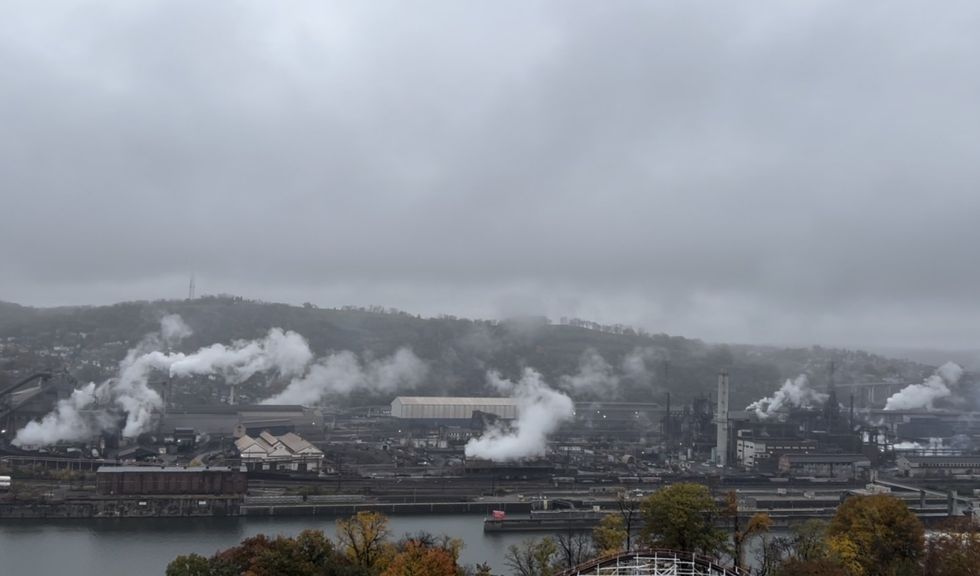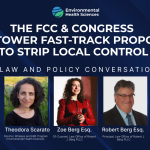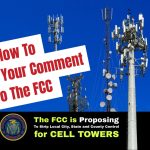I’m a recent high school graduate who lived and breathed for most of my life in Braddock, Pennsylvania, about nine miles southeast of Pittsburgh. Braddock is home to the Edgar Thomson Steel Mill, owned by U.S. Steel, which Nippon Steel recently tried to purchase before the deal was blocked.
During the last year of my high school career, I opened my eyes to the realities of environmental injustice in my neighborhood. It also became clear to me that we need more opportunities for young people like me to learn how to navigate advocacy.
My journey began in summer 2023 when I attended the Public Health Science Academy at the University of Pittsburgh. There I learned that PM2.5 — air pollution particles that have a diameter of 2.5 microns or smaller — is dangerous because these tiny particles penetrate lung tissue, enter the bloodstream, and cause many health issues including respiratory disease, cardiovascular disease, and mental health problems.
My neighborhood in Braddock has higher levels of PM2.5 than 95% of other places in the U.S., a higher proportion of minority residents than 84% of the country, and a higher rate of poverty than 94% of the country, according to data from the U.S. Centers for Disease Control (CDC) and U.S. Environmental Protection Agency (EPA).
PM2.5 increases the risk for health conditions associated with the Pittsburgh area’s health disparities, including cardiovascular disease. For example, in Pittsburgh, more Black residents die of Cardiovascular Disease than in 98% of similar cities. I was shocked to learn about the clear link between particle pollution and cardiovascular disease. If we know so much, then why aren’t we doing more to protect people?
My astonishment continued when I learned that some of the Pittsburgh region’s dramatic health disparities for Black mothers and their babies can be linked to PM2.5 exposure, too. Exposure to PM2.5 is linked to negative health impacts for expectant parents and babies. Pittsburgh’s Black maternal mortality rate is higher than Black maternal mortality rates in 97 percent of similar cities.
Pittsburgh babies born to Black mothers are three times more likely to be under 3.3 lbs than babies born to mothers of other races. This really hit close to home for me, since I was born at just 26 weeks old weighing 1 pound 11 ounces.
Photos and voices from Braddock, Pennsylvania

Photos and voices from Braddock, Pennsylvania

Photos and voices from Braddock, Pennsylvania

Photos and voices from Braddock, Pennsylvania

Photos and voices from Braddock, Pennsylvania

Photos and voices from Braddock, Pennsylvania

Our mayor Delia Lennon-Winstead has said, “U.S. Steel is Braddock, and Braddock is U.S. Steel.” Indeed, where I live the steel mill is inescapable. My neighbors and I can see, hear, and smell the pollution from our complex 0.1 miles away from the mill.
In some ways, the company tries to be a good neighbor. Last Christmas, for example, U.S. Steel bought toys for kids from low-income households in the neighborhood. But the plant is also the biggest reason my neighborhood sees the highest levels of PM2.5 pollution in the country, and the plant regularly violates federal clean air laws. Some of us in Braddock feel that buying kids gifts doesn’t make up for the terrible air quality created by the plant or the damage it does to our health, and that U.S. Steel can do better for our predominantly Black community.
I learned that people in Braddock have been asking U.S. Steel and regulators to curb PM2.5 pollution in Braddock for years without much progress. But I also found out something that gave me a glimmer of hope: There’s plenty of evidence that portable air cleaners can help protect people from the PM2.5 that invades their homes, which is where most harmful exposure to air pollutants happens.
I became determined to make free air cleaners accessible to my neighbors.
I found a local organization, Reducing Outdoor Contaminants in Indoor Spaces (ROCIS), which helped me answer the call. So far, nine of my neighbors’ homes have each received 3 air cleaners. My neighbors have reported that they’re breathing more easily and the air in their homes smells fresher and feels cleaner.
Working to protect my neighbors from U.S. Steel’s air pollution and my conversations with local environmental justice leaders in Pittsburgh deepened my convictions that breathing clean air is a human right, and that I want better for my community.
We shouldn’t stop advocating for cleaner outdoor air in places like Braddock. But we should also take steps to protect people’s indoor air in the meantime, and providing access to free air cleaners in environmental justice neighborhoods like Braddock is part of the solution. And young people need better opportunities to engage in environmental justice advocacy for their neighbors.




